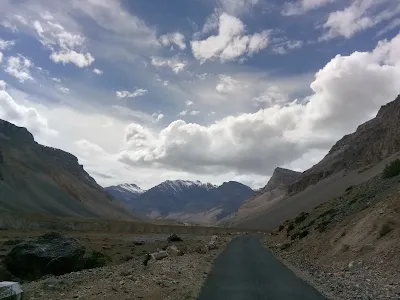A self-drive trip to Spiti Valley is the stuff of dreams—winding mountain roads, vast cold deserts, ancient monasteries, and breathtaking landscapes that seem straight out of a postcard. But driving to Spiti isn’t just a road trip—it’s an adventure that demands preparation, patience, and a bit of courage.
Here’s a complete guide of self-drive tips for Spiti Valley, covering everything from route options to car essentials, permits, and survival hacks.
🗺️ Best Route Options for Spiti Valley
There are two major routes to reach Spiti Valley:
1. Shimla – Kinnaur – Spiti (All-Season Route)
-
Route: Shimla → Narkanda → Kalpa → Nako → Tabo → Kaza
-
Best For: Beginners and travelers in shoulder or winter season
-
Why: Gradual altitude gain, better acclimatization, open longer each year
2. Manali – Spiti (High-altitude Adventure Route)
-
Route: Manali → Rohtang Pass → Kunzum Pass → Kaza
-
Best For: Experienced drivers
-
Why: Shorter but tougher; open only from June to October
👉 Pro Tip: Do a circuit—enter from Shimla and exit via Manali for the full experience!
🚗 Vehicle Choice: What Should You Drive?
-
SUV/MUV: Preferably with high ground clearance (e.g., Thar, Scorpio, Fortuner, Duster)
-
Sedans/Hatchbacks: Possible, but not recommended due to bad patches and river crossings
-
Motorcycles: Popular among adventure riders—but only for experienced bikers
Note: Roads can get slushy, rocky, or waterlogged. Always carry a spare tire and know basic car repair.
⛽ Fuel and Service Tips
-
Carry extra fuel. No petrol pumps after Kaza; the last reliable one is at Reckong Peo or Manali.
-
Fill up at every opportunity—better safe than stranded.
-
Carry basic car tools, tire inflator, and a puncture repair kit.
🛂 Permits & Documents
-
No permits needed for Indians, but foreigners require an Inner Line Permit for certain areas (e.g., Kinnaur).
-
Always carry multiple copies of your ID, DL, vehicle registration, PUC, and insurance.
-
Some check-posts may ask for documentation, especially near sensitive zones.
🏔️ Acclimatization & Health Tips
-
Start slow: Spend a day or two in lower-altitude towns like Kalpa or Tabo to acclimatize.
-
Stay hydrated and avoid alcohol early in the journey.
-
Carry Diamox (only after consulting a doctor), ORS, and basic first aid.
🌨️ Weather and Road Conditions
-
Best Time for Self-Drive:
-
June to September (both routes open)
-
May & October (Shimla route only; weather can be unpredictable)
-
-
Avoid Monsoon (July–August) in the Kinnaur region due to landslides.
-
Winters (Nov–March): Spiti is magical but extremely cold and challenging—only attempt if you’re very experienced.
🏨 Where to Stay
-
Kaza, Tabo, Kalpa, and Nako have plenty of homestays, guesthouses, and small hotels.
-
Book in advance during peak season.
-
Keep a sleeping bag or warm blanket in your car in case of emergencies.
🔌 Connectivity and Essentials
-
Mobile Network: Only BSNL and Jio work in most parts of Spiti.
-
Internet: Weak or no signal beyond Kaza.
-
Carry a power bank, offline maps (like Maps.me), torchlight, and extra snacks.
-
ATMs are limited—carry cash, especially in remote villages.
🚧 Bonus Tips for a Safe Drive
-
Start early and avoid driving after sunset—many roads are narrow and unlit.
-
Honk at blind curves and be patient with local vehicles or livestock.
-
Avoid unnecessary overtaking on hilly roads.
-
Be ready for river crossings, especially post-noon when snowmelt increases water flow.
✨ Final Thoughts
A Spiti Valley self-drive trip is not just about reaching the destination—it's about embracing the raw beauty of the Himalayas with every twist and turn. With the right planning, vehicle, and mindset, this journey can be the most memorable road trip of your life.
Got questions or need help planning your Spiti trip? Drop a comment below—we’re here to help!
